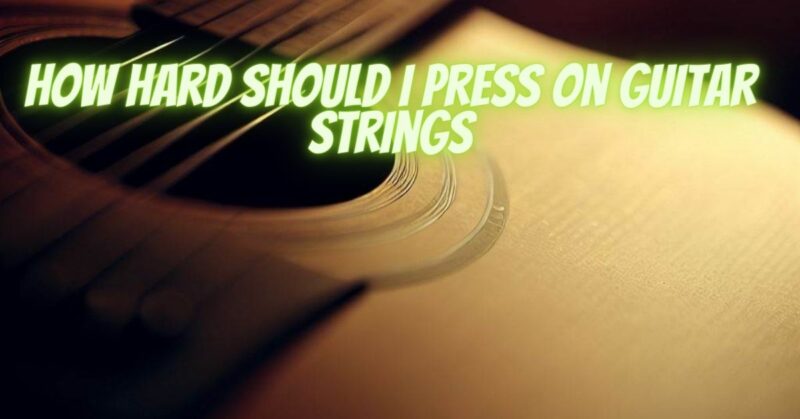One of the common questions many guitarists, especially beginners, have is how hard they should press on guitar strings. Finding the right amount of pressure is crucial for producing clear and resonant notes without causing unnecessary discomfort or strain. In this article, we’ll explore the factors that influence how hard you should press on guitar strings and provide guidance on finding the ideal balance for optimal playability and sound.
- String Gauge:
The gauge of the strings significantly affects how hard you need to press on the guitar strings. Lighter gauge strings (e.g., 9-42 or 10-46) require less tension and are generally easier to press down. Heavier gauge strings (e.g., 11-49 or 12-54) have higher tension and may require more finger strength to fret effectively.
- Guitar Setup:
The setup of your guitar plays a crucial role in how hard you need to press on the strings. A well-adjusted guitar with an appropriate action (the height of the strings above the fretboard) will make fretting easier. If the action is too high, it may require more finger pressure to fret the strings comfortably.
- Finger Strength and Technique:
As you gain experience and play more regularly, your finger strength and fretting technique will naturally improve. Efficient finger placement, using the tips of your fingers, and maintaining proper finger arch will allow you to fret with less effort.
- Playing Style and Technique:
Different playing styles may require varying amounts of pressure on the strings. For example, fingerstyle players might use lighter pressure for intricate picking, while aggressive strummers may press harder for dynamic chords.
- String Material:
The material of the strings can also impact how they feel under your fingers. Phosphor bronze strings, for instance, tend to have a slightly softer feel compared to bronze or steel strings.
Finding the Ideal Pressure:
The ideal amount of pressure to press on guitar strings strikes a balance between pressing too hard and too lightly. Here are some tips to help you find that balance:
- Start with Lighter Gauge Strings: If you’re a beginner or find it challenging to press down on the strings comfortably, consider using lighter gauge strings. Lighter strings exert less tension and may require less finger pressure.
- Focus on Proper Finger Placement: Place your fingertips just behind the fret wire, using the tips of your fingers for fretting. Avoid pressing with the flat part of your fingers, as this can cause muted or buzzing notes.
- Maintain Finger Arch: Keep a slight arch in your fingers when pressing the strings. This prevents other strings from accidentally touching the fretboard, reducing unwanted sounds.
- Gradually Build Finger Strength: Practice regularly to build finger strength over time. As your fingers develop more strength and dexterity, you’ll naturally adjust your fretting pressure.
- Adjust Guitar Setup: If you find that your guitar’s action is too high, have it professionally set up to achieve a more comfortable playing experience.
The pressure required to press on guitar strings is influenced by string gauge, guitar setup, finger strength, technique, playing style, and string material. Experiment with different string gauges and find the most comfortable option for your playing style and skill level. Focus on proper finger placement, maintain finger arch, and gradually build finger strength through regular practice. By finding the ideal balance, you’ll be able to produce clear and resonant notes, chords, and melodies with ease, enhancing your overall playing experience and musical expression on the guitar.

